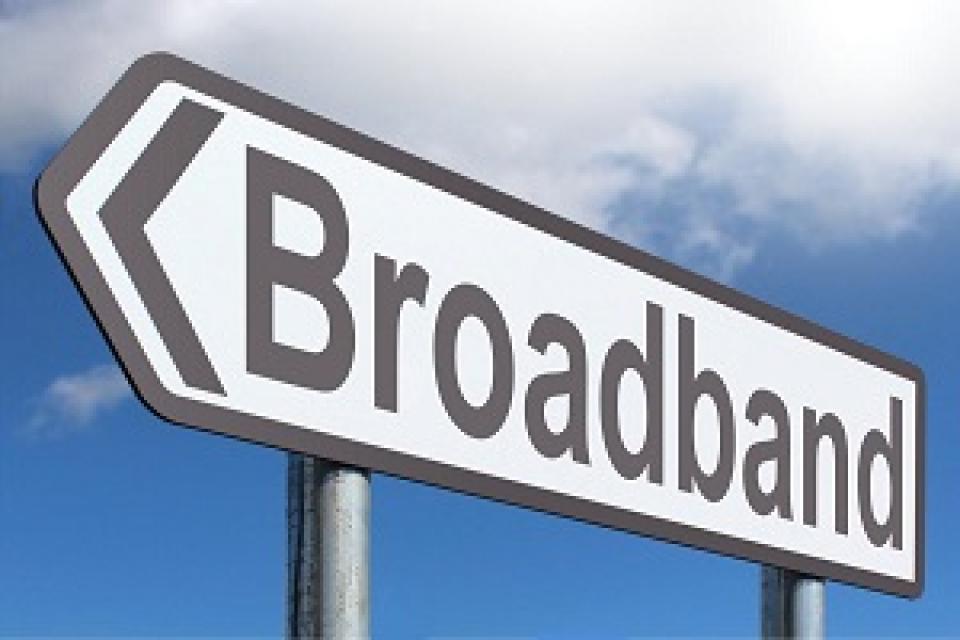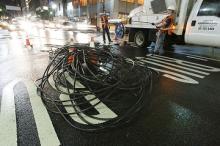
Fast, affordable Internet access for all.

While the bulk of the Accessible, Affordable Internet for All (AAIA) Act proposes to invest $100 billion to expand broadband access in unserved and underserved parts of the country, the legislation also looks to build an essential bridge across the digital divide that goes beyond new infrastructure. An important part of the equation involves addressing laws and policies that have proven to be obstacles to Internet connectivity for tens of millions of Americans.
In our previous installments examining the AAIA, we covered the big-ticket items – the why, how and where the $100+ billion would be invested. This final installment in the series covers the last three major sections of the bill: Title IV – Community Broadband; Title V – Broadband Infrastructure Deployment; and Title VI – Repeal of Rule and Prohibition on Use of NPRM.
These last three sections of the AAIA do not call for any federal appropriations but instead aim to tackle several thorny policy challenges.

Title IV – Community Broadband (Section 4001) of the bill is straight-forward. It would prohibit state governments from enforcing laws or regulations that prevent local governments, public-private partnerships, and cooperatives from delivering broadband service.
As it stands now, there are 19 states across the country where state legislators have passed laws designed to shield the biggest corporate Internet Service Providers (ISPs) from competition. Those laws were mostly written by lobbyists for these behemoth monopolies and duopolies, despite the fact that the Big Telcos have failed to deliver reliable, affordable and truly high-speed Internet access to large segments of the population.
In Colorado, for example, legislators in that state passed SB-152, a law that prevents local governments from investing in broadband infrastructure. Fortunately for Coloradoans, the law was amended to allow municipalities to opt-out through local referendum votes, which over 140 Colorado communities have done in the 15 years since Qwest (now CenturyLink) and Comcast successfully lobbied for passage of the anti-competition bill.
In North Carolina, home to the celebrated Greenlight Municipal Broadband Network, a 2011 state law (HB-129) effectively outlaws municipal networks in the Tarheel State by saddling local governments with a thicket of red tape, including territorial restrictions on existing networks. The building of the Greenlight Network, thankfully, predated the state law, although it continues to impede other municipalities in the state from building their own networks.
As we have written about on numerous occasions, we are strongly in favor of locally-controlled networks and the distinct advantages they provide in terms of affordability and superior customer service, as well as the benefit of keeping local funds in the community instead of dollars being siphoned away to the fill the coffers of out-of-state corporations who extract premium prices as a monopoly provider.
While we support this section of the AAIA, we also recognize the likelihood that some state governors will resent the federal government preempting them just as much as local officials are angry when states restrict local authority.
National “Dig Once” Policy
The next section of the AAIA, Title V – Broadband Infrastructure Deployment (Section 5001), however, provides something the National Governors Association favors: a “dig once” provision to better coordinate transportation and broadband infrastructure projects, while giving states flexibility and preventing any unfunded mandates.
This section of the bill would create a “Dig Once Funding Task Force” to estimate the cost of a nationwide “dig once” requirement. The Task Force, in consultation with stakeholders in rural communities and communities with limited access to broadband, would then propose funding options to implement a “dig once” requirement.

“Dig once,” which effectively eliminates the need to dig up recently-paved roads by requiring broadband conduit to be laid during road construction projects, is an easily overlooked but important consideration. It’s important because up to 90 percent of costs associated with underground deployment are often due to the excavation rather than materials, which is why forward-thinking “dig once” policies save tax dollars, to say nothing of the relief it provides commuters too often stuck in road construction traffic.
The challenge is one of administration. It is not clear who would be responsible for maintaining and leasing out the access as these highways cross many jurisdictions. ILSR and others have encouraged the federal government to focus on bottlenecks like overpasses, bridges, tunnels, railroad crossings, and the like rather than all highways. This would provide most of the benefits at a fraction of the costs and administrative burdens.
Saving a Tribal Lifeline
The final section of the AAIA, Title VI – Repeal of Rule and Prohibition on Use of NPRM (Section 6001), seeks to repeal the widely-criticized rule the FCC adopted in November 2017 that sought to “reform” Tribal Lifeline policies “to increase the availability and affordability of high-quality communications services on Tribal lands.”
While the rule was adopted under the guise of curbing abuses of Lifeline funds, outgoing FCC Chairman Ajit Pai with the support of GOP FCC commissioners, moved to eliminate Lifeline benefits in tribal areas. The program was designed for low-income households on tribal lands to receive a monthly subsidy – the $9.25 Lifeline discount plus an additional $25 – to help qualifying tribal households pay for broadband services. Several companies had committed fraud in Indian Country to maximize their gains under the program and rather than sorting that out, Chairman Pai aimed to simply shut down needed benefits in tribal areas. In February 2019, a federal appeals court temporarily blocked the move. 
After the court-ruling, which allowed the Tribal Lifeline program to continue or require the FCC to re-do the rulemaking process in accordance with the court’s order, Indian Country leaders hailed the decision.
Gene DeJordy, an attorney for the Crow Creek Sioux Tribe, lauded the legal victory and said it meant “that First Americans who live in some of the most impoverished areas of the country can continue receiving essential Lifeline services that they depend on in emergencies, and for work, family care, education, and other vital day-to-day needs.”
Section 6001 looks to settle the matter once and for all by preventing the FCC from adopting a rule to cap Universal Service Funds from which the Lifeline program draws its funding, codifying the view of broadband advocates and Democratic lawmakers who rightfully criticized the rule. This change will likely lead to renewed calls to deal with “contribution reform” – how the Universal Service Fund is filled.
Final Thoughts
In our view, the AAIA represents an important step forward and should be the building block for broadband legislation in the 117th Congress. We believe Congress should provide more focused support for urban needs, which have been overlooked historically, as a considerable amount of effort has been focused on rural areas that are less politically controversial. As with so many other policy areas that involve the allocation of federal resources, the evidence indicates systemic racial imbalances even as every demographic group in the U.S. has challenges accessing high-quality Internet. White Americans have enjoyed disproportionate government support to address these barriers to access and we believe it is a simple matter of equity to craft policies and legislation that ensures no segment of the population is left behind.
This concludes our series on the AAIA. Read the full series below:
Major Change on the Horizon? Explaining the Affordable, Accessible Internet for All Act - Part 1
Watch CBAN's webinar on the legislation, along with conversation from bill co-author Cindy Axne.



